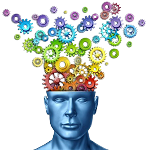Archive
Happy Birthday Ben
Ben Franklin‘s birthday is January 17. Benjamin Franklin (1706-1790) was a signer of both the American Declaration of Independence and the United States Constitution, the first American Ambassador to France, and a scientist, inventor, writer, author, and printer.
His Poor Richard’s Almanac was a best seller during its publication (1732 – 1758) and stands to this day as an icon of American literary invention. He used the Almanac as a vehicle for many well known sayings. Among the most famous:
Well done is better than well said.
Happy Birthday Mr. Lincoln
 Lincoln was the tallest President. At six feet, four inches, Lincoln towered over most of his contemporaries. The average height for a man during that time was about five feet, six inches. When seated, the President was about the same height as an average man; he had exceptionally long legs.
Lincoln was the tallest President. At six feet, four inches, Lincoln towered over most of his contemporaries. The average height for a man during that time was about five feet, six inches. When seated, the President was about the same height as an average man; he had exceptionally long legs.
Before Abraham Lincoln, there had never been a U.S. President with a beard. Since his presidency, four presidents have had full beards.
At the time of his marriage to Mary Todd Lincoln, Abraham Lincoln had been very poor. Lincoln courted Mary Todd for only one year before proposing marriage. Mary Todd Lincoln’s family did not approve of the match.
Lincoln was born in Indiana but began his political career in Illinois. The Lincoln Presidential Library is located in Springfield, Illinois.
The16th President hated to go to the dentist. There was little anesthesia at the time, and one dentist has actually broken off part of Lincoln’s jaw when pulling a tooth.
After his birth mother died of milk sickness, Lincoln’s father remarried. As a boy, Lincoln was very close to his step-mother, and she was supportive of his need to educate himself.
Lincoln loved animals and did not like hunting or killing them even for food. He had several pets including dogs, cats, and even a turkey.
Most people think of Abraham Lincoln wearing a tall stovepipe hat. He used to store things in his hat, including letters and other documents.
Mary Todd and Abraham Lincoln had four children. Three of their children died before reaching adulthood. Robert Lincoln was the only child to survive. Abraham Lincoln has no living descendants.
Lincoln suffered from serious depression and migraine headaches. Both could be debilitating, and there were times he spent days in bed.
Our 16th President considered himself a Christian, but he did not belong to any church. He did not routinely say grace at mealtime, but he did read the Bible. Despite not belonging to an established church, many consider Lincoln to have been a spiritual man.
Abraham Lincoln was a witty man. Many of his jokes and funny sayings have been recorded, including this one: “If I were two-faced, would I be wearing this one?”
Abraham Lincoln was the first president to be assassinated. He was killed on April 15, 1865 by John Wilkes Booth. At the time of his death, Lincoln was 56 years old.
One little-known fun fact about Abraham Lincoln is that he had a dream predicting his own death. In his dream, he heard crying in the White House. When he asked the person who had died, he was told that it was the President.
One of the most fascinating and well-known presidents, Abraham Lincoln is a mystery in many ways. He was a renowned jokester, despite suffering from major depression. He could wield an axe and wrestle, yet he was suffering from ill health at the time of his death. There are many contradictions surrounding the life and death of this amazing man.
This is Your Life!
The Global War on Christians
 The scale and severity of Islamophobia pales in comparison with the bloody Christophobia currently coursing through Muslim-majority nations from one end of the globe to the other.
The scale and severity of Islamophobia pales in comparison with the bloody Christophobia currently coursing through Muslim-majority nations from one end of the globe to the other.
– Ayaan Hirsi Ali
We hear so often about Muslims as victims of abuse in the West and combatants in the Arab Spring’s fight against tyranny. But, in fact, a wholly different kind of war is underway—an unrecognized battle costing thousands of lives. Christians are being killed in the Islamic world because of their religion. It is a rising genocide that ought to provoke global alarm.
NanoTechnology, NanoBots, and Computer Manufacturing
Wikipedia says this regarding nanotechnology: “Nanotechnology (sometimes shortened to “nanotech”) is the study of manipulating matter on an atomic and molecular scale. Generally, nanotechnology deals with developing materials, devices, or other structures possessing at least one dimension sized from 1 to 100 nanometers. Quantum mechanical effects are important at this quantum-realm scale.
Nuff Said!
Remember
We Have A Choice
 Dear Voters, Don’t settle for a candidate, decide on one!
This election is a three-way race. We’re already shaking things up and asking current candidates the tough questions with the Crash the Party bus tour! Follow the action and find out where we’re stopping next at CrashTheParty.org. If you’d like to see us in your hometown, send us an email and let us know! Please forward this email to everyone you know – friends, family, co-workers, anyone – and tell them they have the power to pick the third choice in 2012. Thank you for your continued support, from all of us at Americans Elect. Elliot Ackerman |








